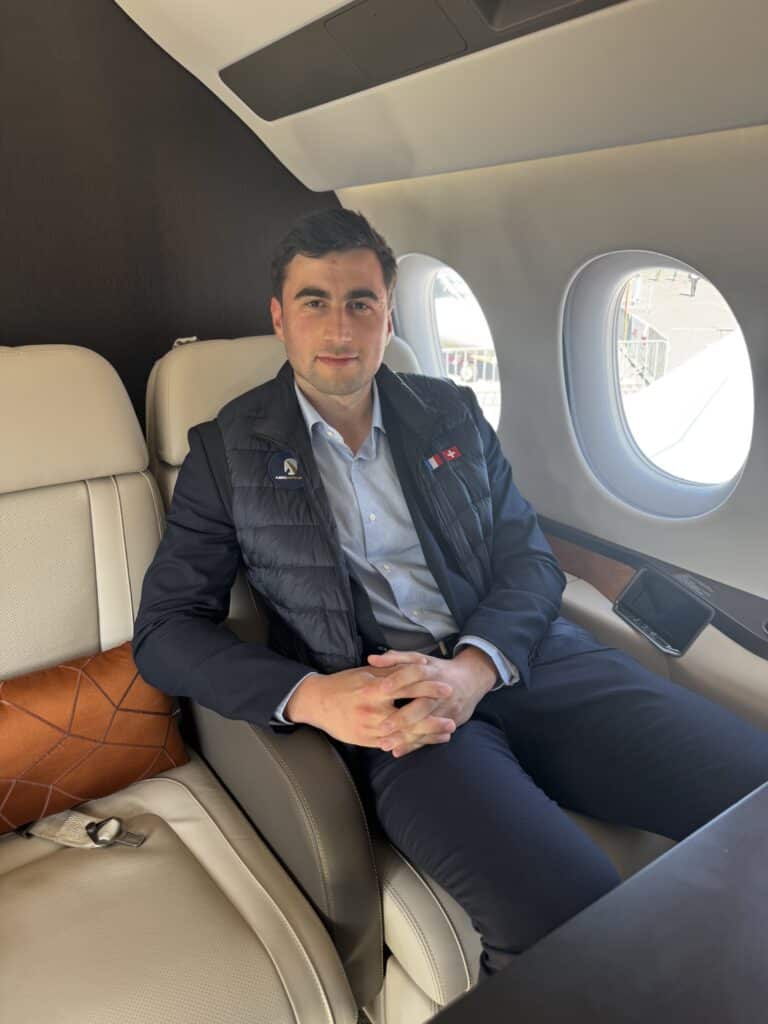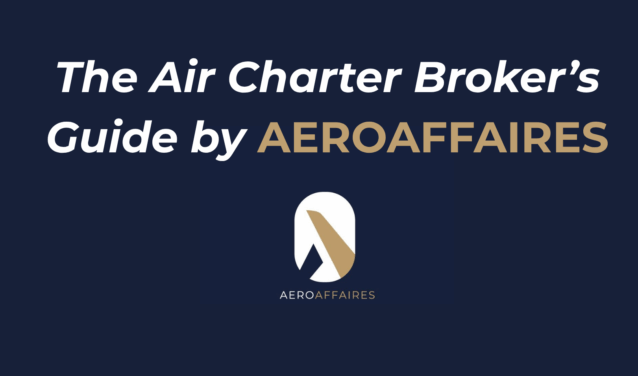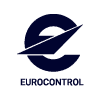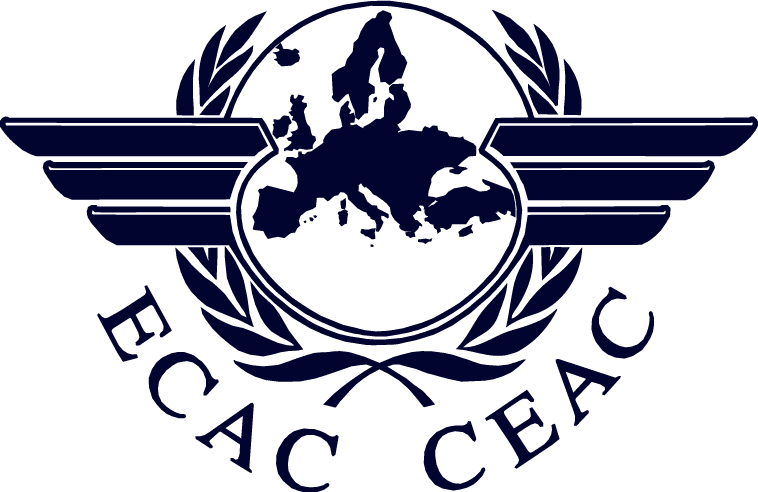The operational and regulatory reference for decision-makers
Air brokerage is a balancing act: between regulatory rigor, operational responsiveness and absolute customer confidence.
At AEROAFFAIRES, we wanted to bring together in this guide all the references, texts and best practices that structure this profession in Europe and worldwide.
This document is aimed at decision-makers, operators and brokers wishing to work to public passenger transport standards, in compliance with EASA (European Union Aviation Safety Agency), DGAC (Direction Générale de l’Aviation Civile), ICAO (International Civil Aviation Organization) regulations and the codes of conduct established by The Air Charter Association (ACA) andEBAA (European Business Aviation Association).
1. The role of the air broker
An air broker acts as the interface between a business customer and a certified operator, securing regulatory compliance, qualifying risk, orchestrating execution and steering the relationship from start to finish. The mission is not to “find an aircraft”, but to engage the right chain of operator, FBO, handler, crew, customs, slots, flight plan, insurance, means of payment, and after-flight service, with documentary traceability.
An air broker is not simply a commercial intermediary. Their mission: to transform a flight request into a compliant, safe and documented operation, without transferring risk to the customer.
The Air Charter Association’s Code of Practice sets out best practices for transparency and disclosure, detailing quote transparency, broker status, legal compliance and ongoing training.

The role of the air charter broker in practice with Hugo, Senior Private Sales Advisor at AEROAFFAIRES
Hugo is what we call a mission pilot on the ground.
His role is not limited to finding an aircraft: he builds a flight, from the first request to the final landing, involving the entire chain – certified operator, crew, FBO, handler, customs, slots, flight plan, insurance and payment methods.
Every file he handles must be compliant, traceable and secure.
His priority is not speed, but solidity: regulatory compliance, AOC verification, adherence to flight times, flight plan validation and document control.
His job is to eliminate areas of uncertainty before the customer even sees them.
“A successful flight is one we don’t talk about, because everything has been anticipated,” he sums up.
Industry reference:
2. Air brokerage regulatory framework
2.1 Europe
Commercial operations fall under the Air OPS Regulation (EU) No 965/2012, which comprises several parts:
- Part ORO (Organisation Requirements for Air Operations): requirements relating to the organisation of operators;
- Part CAT (Commercial Air Transport Operations): commercial air transport operations;
- Part SPA (Specific Approvals): specific approvals (ETOPS – Extended-range Twin-engine Operations, RVSM – Reduced Vertical Separation Minimum, PBN – Performance Based Navigation, etc.);
- Part NCC (Non-Commercial Complex) / NCO (Non-Commercial Other) / SPO (Specialised Operations): non-commercial and specialised operations.
The consolidated version of Easy Access Rules enables you to navigate through the applicable appendices and AMC/GM.
TheAOC (Air Operator Certificate) is issued by the competent authority, in France the DGAC, under the supervision of the French Ministry of Ecological Transition.
Sources :
2.2 Slots and network management
Airport slots follow the Worldwide Airport Slot Guidelines (WASG), edition 4, effective August 1, 2025.
Eurocontrol’s Network Manager coordinates ATFCM (Air Traffic Flow and Capacity Management) measures and provides B2B services dedicated to operators.
Source :
2.3 Flight and service times
The Flight Time Limitations (FTL) defined in Subpart ORO.FTL apply to all public transport operators.
They govern maximum service time, rest periods and fatigue management within the Safety Management System (SMS).
Source :
2.4 Passenger data and compliance
The API (Advance Passenger Information) and PNR (Passenger Name Record) systems are governed by European texts 2024 and 2025, under the supervision of DG Migration and Home Affairs and the Council of the European Union.
These data are processed in compliance with the General Data Protection Regulation (RGPD) and IATA sector standards.
Source:
2.5 Combating illegal activity
The fight against “grey charters ” is a priority in both the UK and the USA.
Professional organizations regularly publish prevention guides and audit databases:
- The Air Charter Association ( Stop Illegal Charter campaign) ;
- NBAA ( Illegal Charters Awareness program).
For brokers, due diligence means refusing all non-OCA operations, checking authorizations and documenting proof of compliance.
Sources :
2.6 Carrier liability
The Montreal Convention (1999) sets out air carrier liability regimes.
The compensation ceilings have been revised as of December 28, 2024:
- Passenger delay: 6,303 SDRs;
- Baggage: 1,519 SDRs;
- Freight: 26 SDR/kg.
Source :
2.7 Passenger rights
Regulation (EC) no. 261/2004 applies according to itinerary and carrier status (public transport only).
A reform is currently underway within the European Union to update compensation and notification procedures.
The broker’s role is to frame contractual expectations, particularly in cases of cancellation or delay.
Source :
3. Safety and quality, the broker’s frame of reference
3.1 Voluntary international standards
The IS-BAO (for flight operations) and IS-BAH (for ground handling) standards are the global benchmarks for safety and compliance.
Piloted by theInternational Business Aviation Council (IBAC), these programs define strict safety management, audit and continuous improvement procedures for operators and FBOs (Fixed-Base Operators).
An IS-BAO-certified operator or an IS-BAH-labeled airport guarantees a level of internal control aligned with global best practice.
Source :
IBAC – IS-BAO & IS-BAH Standards
3.2 Third-party safety assessments
Independent assessments by Wyvern Wingman and ARGUS Ratings provide additional guarantees of airline reliability.
They examine regulatory compliance, crew training, maintenance, documentation and operational history.
In practice, a professional broker requires :
- valid Wyvern status or ARGUS Gold/Platinum rating;
- verification of recent reports before signing the contract ;
- and documentary retention of this evidence in the flight file.
Sources :
3.3 Team training and qualification
The Broker Qualification developed by The Air Charter Association establishes a common base of skills for air brokerage professionals.
This training, now available online, covers European regulations, AOC compliance, risk management, contractual transparency and customer relations.
It aims to guarantee a consistent level of professionalism and knowledge of the legal framework, in a sector where trust relies on rigor.
Source :
The Air Charter Association – Training & Broker Qualification



4. Market, essential tools and connectors
4.1 Sourcing and pricing
Today, every business aviation broker develops its own sourcing and pricing tool, to ensure direct, rapid and secure access to the entire global market.
At AEROAFFAIRES, this technology enables us to connect more than 20,000 aircraft worldwide in real time, across all categories: light jets, long-haul aircraft, helicopters and regional aircraft.
These in-house platforms guarantee an instant view of availability, cabin configurations and optimized itineraries, while integrating payment and management solutions that comply with European safety and traceability standards.
4.2 Operator control and verification
The ARGUS and Wyvern independent assessment registers complement regulatory checks (AOC, fleet, maintenance).
They are the benchmark for selecting safe, compliant operators, particularly for high-responsibility flights (executives, ministerial teams, medical transport, etc.).
Before each mission, the broker checks :
- the validity of the AOC,
- the operator’s safety rating,
- and consistency between the type of aircraft offered and the authorized area of operation.
These checks secure the operational chain and document compliance in the flight file.
Sources :
4.3 Slots and network management
Slot planning at coordinated airports is based on the Worldwide Airport Slot Guidelines (WASG) published byIATA, the 4th edition of which came into force in August 2025.
Before quoting, brokers should consult :
- eurocontrol network publications,
- aTFCM restrictions,
- and local parking, FBO and fuel capacities.
This coordination guarantees the actual feasibility of the flight and prevents any risk of inaccuracy in the schedules communicated to the customer.
Sources :
5. AEROAFFAIRES method, the execution chain
Each mission follows a rigorous, fully documented and auditable process. The objective is simple: to guarantee regulatory compliance, passenger safety and operational fluidity, from first contact to file closure.
5.1 Qualifying the request
It all starts with a thorough understanding of the need. The team analyzes the purpose of the trip, scheduling constraints, possible airports and passenger profiles. Specific parameters are also studied: baggage volumes, animal transport, sensitive equipment, medical devices or regulated goods.
This first step provides a clear framework for the aircraft search.
5.2 Regulatory compliance
Prior to any commercial proposal, AEROAFFAIRES verifies the validity of each operator’s AOC (Air Operator Certificate), as well as the SPA approvals required according to the type of mission. IS-BAO certification levels are checked, as are independent Wyvern and ARGUS ratings.
Administrative services also carry out KYC (Know Your Customer) verification of the payer and AML screening for international or cryptocurrency transactions, in compliance with European directives.
Sources :
EASA – Regulation (EU) No 965/2012
IBAC – IS-BAO Standards
ESMA – AML & Cryptoasset Compliance
5.3 Sourcing and evaluation
Once the requirement has been qualified, the broker contacts several approved operators via the Avinode platform and its direct network of partners.
The assessment covers cabin configuration, maintenance status, airframe and engine hours, short-field performance, incident history and crew policy with regard to Flight Time Limitations (FTL).
Each element is compared and recorded to document the final decision.
Source :
Avinode – Marketplace for Air Charter Professionals
5.4 Slots and network feasibility
For coordinated airports, flight feasibility is checked prior to confirmation. Slots, handling capacities, ATFCM restrictions, weather and parking availability are analyzed.
The broker always provides a fallback solution, to ensure mission continuity in the event of an operational hazard.
Source :
IATA – Worldwide Airport Slot Guidelines, 4th Edition
5.5 Quotation and contract
The quotation submitted to the customer sets out all the parameters in a transparent manner: prospective operator, indicative registration, liability limits according to the Montreal Convention (MC99), cancellation conditions, insurance, baggage and fuel policy, SAF availability, possible operator substitutions and force majeure clauses.
Each AEROAFFAIRES offer is accompanied by a complete documentary file, guaranteeing the traceability of commitments.
Source :
IATA – Worldwide Airport Slot Guidelines
5.6 Flight execution
As soon as the contract is validated, AEROAFFAIRES coordinates the entire operational chain: flight plan, overflight and landing permissions, handling, catering, transfers, security briefing and passenger data management (API/PNR).
Each document is checked before departure. On the day of the flight, traffic monitoring is carried out in real time, and any incident is the subject of a recorded report.
Source :
European Commission – Migration and Home Affairs (Travel Information)
5.7 Closure and compliance
Once the mission has been completed, the quality department consolidates and archives the contractual documents: AOC, insurance certificate, signed quotation, invoice and execution report.
Punctuality and satisfaction indicators are integrated into internal monitoring, while KYC/AML procedures and operator audits are updated.
Each assignment thus becomes a basis for continuous improvement for subsequent ones.
Source :
European Commission – Financial Crime and AML Framework
6. Contracts, liability and customer expectations
6.1 Brokerage contracts
The relationship between the customer, the broker and the operator is based on a precise contractual framework.
AEROAFFAIRES the Air Charter Association‘s Code of Practice defines the best practices of the profession: transparency of quotations, clarity of roles between broker and operator, fair treatment of assets, and full information of the customer before signature.
This framework guarantees a balanced division of responsibilities and clear legal protection for all parties.
Source :
The Air Charter Association – Code of Practice (2023)
6.2 Carrier liability
The Montreal Convention (1999) sets out the international liability regime applicable to commercial air transport.
Since the December 2024 revision, compensation limits are 1,519 SDR for baggage, 6,303 SDR for passenger delay, and 26 SDR per kilogram for cargo.
These amounts, expressed in Special Drawing Rights (SDR), are revised periodically to take account of inflation and market conditions.
AEROAFFAIRES systematically informs executive customers and legal departments of these ceilings to ensure a full understanding of the applicable liability framework.
Sources :
ICAO – Montreal Convention 1999 (as amended)
Kennedys Law – Aviation Market Insights, April 2025
6.3 Passenger rights
European regulation (EC) no. 261/2004 governs the rights of air passengers in the event of denied boarding, cancellation or long delay.
Its application depends on the itinerary and status of the carrier: it concerns flights operated by airlines certified for public passenger transport.
AEROAFFAIRES ensures that contractual expectations are precisely defined, by explaining the situations covered and the exclusions provided for in the text.
The company refrains from any promise of compensation that exceeds the legal framework defined by the European Union.
Source :
EUR-Lex – Regulation (EC) No 261/2004
6.4 Professional indemnification
Like all licensed business aviation operators, AEROAFFAIRES is covered by specialized professional liability insurance.
This protects both the company and its customers against the risks associated with brokerage services: administrative errors, failure to communicate, or contractual mishaps.
Insurers in the sector – notably ITIC, which lists international air brokers – regularly publish feedback and claims studies, serving as a basis for the continuous improvement of internal procedures.
Source :
ITIC – Professional Indemnity for Air Charter Brokers
7. Payments, cryptocurrencies and compliance
7.1 Tools and financial flows
Inter-professional transactions are now largely secure thanks to Paynode, the payment solution developed by the Avinode group.
Integrated directly into the marketplace, this platform facilitates settlements between brokers and traders, while reducing operational risk.
Financial flows are executed in several currencies, with full traceability and banking supervision in compliance with European regulations.
The system is based on the infrastructure of Currencycloud, licensed as a payment institution in the UK and the European Union.
Source :
Currencycloud – Case Study Avinode Paynode
7.2 Cryptocurrencies and MiCA regulation
The European Union has adopted the Markets in Crypto-Assets (MiCA) regulation, complemented by the revised Transfer of Funds Regulation (TFR).
These texts impose the Travel Rule on all digital asset service providers (CASPs), which comes into force at the end of 2024.
An airline broker accepting cryptocurrency payments must imperatively collaborate with a provider registered with a competent national authority, ensure full traceability of funds and update its internal AML compliance procedures.
The aim is to ensure the same transparency as for traditional bank payments, while respecting customers’ contractual confidentiality.
Source :
ESMA – Markets in Crypto-Assets Regulation (MiCA)
7.3 AML compliance and KYC procedures
The European Anti-Money Laundering Directives (AMLD) require all authorized financial intermediaries and air brokers to verify the identity of the payer and detect any associated risks.
AEROAFFAIRES applies a proportionate system, in line with the requirements of the European Legislative Package 2025, which includes control of politically exposed persons (PEP), verification of the origin of funds and monitoring of sensitive operations.
Every transaction is fully traceable and securely archived as part of the internal compliance system.
Source :
European Commission – Anti-Money Laundering and Countering the Financing of Terrorism Framework
8. Sustainable fuels, emissions and climate policy
8.1 Sustainable fuels (SAF) in Europe
The ReFuelEU Aviation regulation, adopted by the European Commission, sets progressive quotas for the use of sustainable fuels in air transport. The aim is to harmonize the use of SAF (Sustainable Aviation Fuel) throughout the Union, in order to gradually reduce the sector’s carbon intensity.
The text introduces obligations for airports and operators, with a timetable for integration spread over several years. It is accompanied by incentive mechanisms and subsidies to support local production, which is still limited and costly.
The economic context is still evolving: availability of raw materials, structuring of the industry and budgetary trade-offs by member states are among the main challenges in the short term.
Sources :
European Commission – ReFuelEU Aviation Regulation
Reuters – SAF Implementation Challenges (2025)
8.2 Offsetting and CORSIA
For international flights, carbon offsetting is governed by the CORSIA scheme (Carbon Offsetting and Reduction Scheme for International Aviation), set up by the International Civil Aviation Organization (ICAO).
This scheme requires operators to declare their emissions and offset them using certified carbon credits. As an intermediary, the air broker has a role to play in terms of advice and transparency: he must inform his customers of the mechanisms used, the programs chosen and the limits of offsetting.
The aim is to avoid any approximate communication or greenwashing, by favoring projects that are traceable, audited and registered in official registers recognized by the ICAO.
Source :
ICAO – CORSIA Overview and Implementation
8.3 Doctrine AEROAFFAIRES
AEROAFFAIRES applies a pragmatic and measured approach to environmental performance.
Priority is given to the actual reduction of emissions rather than to offsetting alone. This policy is based on optimized flight planning, rigorous management of mass and balance, selection of fuel-efficient routes and use of SAF blends whenever availability permits.
Offsetting then takes place, in a transparent and traceable way, to achieve documented carbon neutrality for each mission.
9. Segment specifics
9.1 Helicopter operations
Helicopter operations are subject to specific performance constraints and local regulations.
The broker checks the HEMS category when the mission is medical, overflight and noise restrictions, FATO/TLOF procedures at landing sites, as well as wind and load conditions at the fixed point.
All this is governed by the annexes to the EASA Air OPS regulations, applicable to specialized operations.
Source :
EASA – Easy Access Rules for Air Operations
9.2 Group flights and incentive missions
Group flights require careful planning.
The broker must take into account coordination constraints at saturated airports, seat and baggage distribution, organization of boarding services, as well as administrative management of API (Advance Passenger Information) lists and passenger manifests.
During periods of high demand, slot strategy is based on the principles of WASG (Worldwide Airport Slot Guidelines) to guarantee punctuality and operational feasibility.
Source :
IATA – Worldwide Airport Slot Guidelines, Edition 4
9.3 Urgent and critical cargo
Air transport of urgent cargo requires complete mastery of the legal and technical framework.
Brokers inform their customers of the liability limits set out in the Montreal Convention (MC99), and of any exclusions linked to the nature of the goods.
He coordinates compliance with regulations on dangerous goods (IATA DGR), organizes customs formalities and ensures the safety of loading and unloading operations.
Each shipment is subject to a documentary check and a declaration of value to guarantee insurance coverage of the transport.
Source :
Benesch Law – Liability Limitations for International Air Transportation (2024 Update)
10. Indicators and quality management
AEROAFFAIRES ‘s operational performance is based on continuous quality measurement.
Each mission is subject to detailed post-flight monitoring, including indicators of on-time departure and arrival, aircraft reassignment and documentary compliance.
Safety feedback, reported incidents and corrective actions are analyzed as part of the Safety Management System (SMS).
The company also monitors the proportion of flights operated with SAF, average payment times for operators and the satisfaction rate (NPS) of passengers and management assistants.
These data are consolidated on a quarterly basis to feed a continuous improvement process and maintain the high standards that distinguish AEROAFFAIRES in the international air brokerage market.
11. Ready-to-use checklists
11.1 Operator due diligence
Before confirming a flight, the broker checks all the elements attesting to the air operator’s compliance.
TheAOC (Air Operator Certificate) must be valid: this is the operating license issued by the national authority (in France, the DGAC) which authorizes the public transport of passengers.
The SPA (Specific Approvals) domain indicates the types of operations the operator is authorized to carry out, such as reduced-space flights (RVSM), precision approaches (PBN) or transoceanic flights (ETOPS).
Valid aviation liability insurance is required, covering passengers, third parties and freight in accordance with the Montreal Convention.
The broker then checks the aircraft’s airworthiness, i.e. its technical conformity, the validity of its maintenance certificate (ARC) and compliance with maintenance deadlines.
The crew must comply with FTLs (Flight Time Limitations), which set maximum duty and rest limits.
The operator must be referenced in the IS-BAO (International Standard for Business Aircraft Operations) and ideally have a Wyvern Wingman audit or ARGUS Gold/Platinum rating, attesting to the quality of its operational management.
Finally, the history of SAFA (Safety Assessment of Foreign Aircraft) inspections, carried out by European authorities, is consulted where available for the aircraft or fleet concerned.
Sources :
EASA – Air Operator Certificate (AOC)
Wyvern – Safety Audits and Wingman Program
IBAC – IS-BAO Standard
11.2 Mission roadmap
The route sheet consolidates all the steps required for successful flight execution.
The broker confirms the airport slots, i.e. the time slots authorized for landing and take-off, checking withEurocontrol for any ATFCM (Air Traffic Flow and Capacity Management) measures likely to affect traffic.
Handling, i.e. ground services (passenger assistance, loading, fuel, parking, FBO coordination), is confirmed for all stopovers.
In the case of extra-EU flights, the broker obtains overflight and landing permissions from the third countries concerned.
API (Advance Passenger Information) and PNR (Passenger Name Record) data is then prepared, so that the required passenger information can be transmitted to the authorities.
Catering is planned in line with any dietary constraints. Ground transfers are booked in coordination with the arrival FBO.
A fallback plan is systematically drawn up, providing for an alternative airport or aircraft in the event of unforeseen technical or meteorological circumstances.
Finally, a pre-flight safety briefing reminds passengers of emergency procedures, confidentiality rules and passenger instructions.
Sources :
IATA – Worldwide Airport Slot Guidelines, Edition 4
Eurocontrol – Network Operations Portal
11.3 Customer quotation and contract
The contractual quotation submitted to the customer formalizes the broker’s commitment.
It mentions the prospective operator, his regulatory status, the indicative registration and the essential conditions of the flight.
Limits of liability are specified in accordance with the Montreal Convention (MC99), which sets the compensation ceilings applicable in the event of delay, baggage loss or incident.
Cancellation and postponement policies are detailed, as are fuel conditions (including the possibility of partial blending with SAF, Sustainable Aviation Fuel).
Responsibilities for transporting animals, fragile equipment or oversized baggage are explicitly mentioned.
The contract also includes the mediation and incident management process, accepted means of payment, the AML (Anti-Money Laundering) clause relating to the source of funds and a paragraph on the protection of personal data (data privacy), compliant with the RGPD.
Source:
IATA – Montreal Convention and Passenger Rights
12. References and key industry sources
For verification, training and monitoring
– EBAA, guidelines for the contracting of charter flights, document co-published with The Air Charter Association.
– The Air Charter Association, Code of Practice, Broker Qualification training, prevention of illegality.
– IBAC, IS-BAO and IS-BAH, safety standards for operators and handlers.
– EASA, Air OPS 965 and Easy Access Rules, AOC, FTL ORO. EASA
– DGAC France, definitions of public passenger transport and role of the authority. French Ministry of Ecological Transition
– IATA, Worldwide Airport Slot Guidelines edition 4 and slot resources. IATA
– Eurocontrol, Network Manager, network operations and ATFCM manuals. eurocontrol.int
– ICAO, CORSIA and MC99 limits revision 2024. ICAO
– European Union, ReFuelEU Aviation, EU Council decisions on MC99, API PNR framework. Mobility and Transport
– NBAA, resources against illegality and charter guides. NBAA
– Argus and Wyvern, registers and rating criteria. Argus International
– Avinode Group, marketplace, workflows and Paynode payments. Avinode
– MiCA and TFR, crypto framework in Europe and Travel Rule, ESMA resources. esma.europa.eu
– Regulation 261 and reforms, EUR-Lex sources and consumer networks. EUR-Lex
– ITIC, professional liability insurance for airline brokers. ITIC
– SAF policy news and European subsidies, 2025 context. Reuters
12. Official sector references
| Institution | Field | Link |
|---|---|---|
| EBAA | European Business Aviation | ebaa.org |
| The Air Charter Association | Code of conduct & training | theaircharterassociation.aero |
| IBAC | IS-BAO / IS-BAH Standards | ibac.org |
| EASA | Air OPS and regulations | easa.europa.eu |
| DGAC France | Certification and supervision | ecologie.gouv.fr |
| Eurocontrol | European network management | eurocontrol.int |
| IATA | Slots and international regulation | iata.org |
| ICAO | MC99, CORSIA | icao.int |
| Avinode / Paynode | B2B Marketplace | avinodegroup.com |
| Wyvern / ARGUS | Security audits | flywyvern.com |
| ESMA / EU | MiCA & AML | esma.europa.eu |
13. The AEROAFFAIRES difference
- A strict interpretation of texts and standards, and a zero-tolerance policy for the illegal.
- Risk modeling by mission, prioritizing safety, compliance and comfort.
- Documentary traceability to reassure legal and purchasing departments.
- A pragmatic climate policy, with concrete arbitration on routing, weight, SAF availability and serious compensation.
- A single point of contact for each file, responsible for the result, without transferring the burden to the customer.

Our certifications
AEROAFFAIRES selects its aircraft to the highest standards of the aeronautics industry.
14. Practical appendices
14.1 Information to be included in a quotation
Operator and AOC, insurance coverage, indicative registration, airports and slots, WASG conditions if applicable, MC99 limits, baggage and animal policy, cancellation conditions, substitution plan, fuel conditions and SAF option, means of payment and AML KYC clauses, API PNR mentions if required. IATA
14.2 Compliance indicators to be reported to the customer
AOC and SPA compliance, FTL crew compliance, IS-BAO IS-BAH status, slot verification, ATFCM status, incident reports, notification deadlines, archived supporting documents.
14.3 Safeguards against illegality
Always demand proof of AOC and exact scope of operations, refuse any cost-sharing provision outside the framework, check foreign charter permits and suitability of aircraft for proposed segments, document each check.











